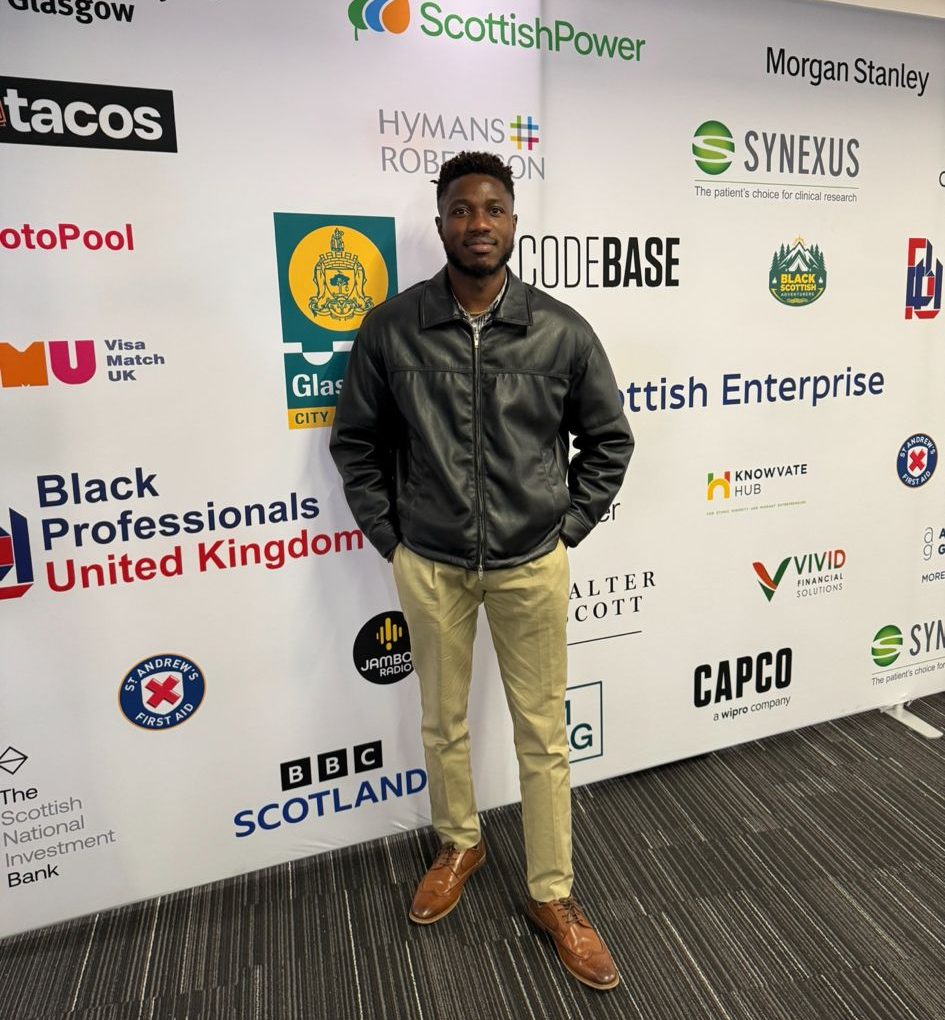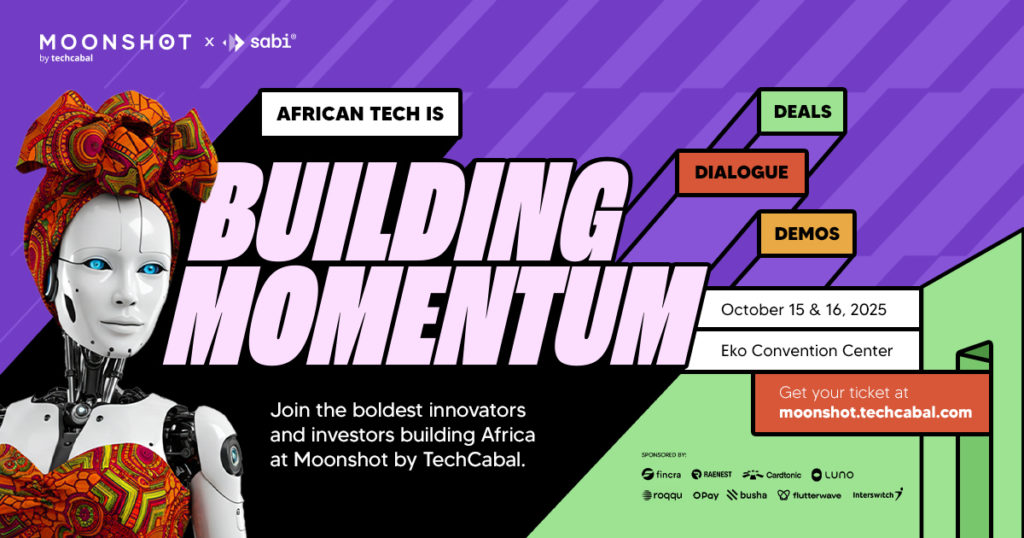Leke Ariyo told me that he had always known he wanted to build a global career.
While working international roles from Lagos, he saved every paycheck, setting aside what he needed to pay for a relocation. His eyes were fixed on graduate study abroad, a chance to sharpen his skills and open a new chapter of work.
“When you are working in Nigeria for a foreign company, there is not that much you really want to spend that can match how much you are earning. I just kept setting it aside, and when the time came, I was ready,” he said.
By 2022, three years later, the path opened. He received a fully funded master’s scholarship to study machine learning and deep learning at Strathclyde University in Glasgow, Scotland. It covered tuition and living expenses. More than that, it became the bridge that moved him from Nigeria into the global circuit of site reliability engineering.
Switching to site reliability and moving to the UK
Ariyo had spent his early years switching between software and leadership roles in Nigeria. He worked at FoodCourt and later co-founded Briks and EscrooVest, sharpening his technical instinct while also stepping into the hard lessons of building startups. In the UK, he leaned fully into reliability engineering.
A site reliability engineer (SRE) designs and maintains the backbone of technology products. They build the infrastructure that keeps systems alive, automate the work that slows down engineers, and watch the signals that show whether a product is healthy or in distress.
“[SRE means] building systems that let companies run smoothly and faster,” he told me. “There is that speed where we are always trying to improve timing, and at the same time, we use automation to reduce manual toil. Security matters, availability matters, and our job is to make sure the system stays up and works for people no matter where they are.”
The work is a healthy blend of software engineering and operations, and can be global. An SRE can work in distributed teams; they do not need to be in the same office as the servers they manage. With the right setup, someone in Lagos or Accra can monitor and fix production systems used by millions of people in other parts of the world.
Though the demand for SREs has declined since the highs of 2023, when it was one of the most important tech roles, it remains a critical operation for many companies. SREs have been overshadowed by the demand for more AI expertise and tech infrastructure roles. Yet firms in Europe and the US keep hiring, from startups handling thousands of transactions to Big Tech companies that process billions.
Ariyo’s own move into the UK job market—after his master’s at Strathclyde—came almost by chance. Near the end of his programme in Glasgow, he attended a networking event where teams from different companies had set up stalls. He shared his CV, held conversations, and walked away without expecting much. Weeks later, a manager who had spoken with him at the event called back.
That conversation led to interviews, which in turn led to a job in the UK. Today, he works at a global financial institution and holds a membership at the British Computer Society (BCS).
“Opportunities are massive,” said Ariyo. “You can be in Lagos and still contribute to millions of users if you have the right skills. Reliability is a global need, and once people see that you can distinguish yourself, they will value you no matter where you are.”
Why reliability matters
The work of an SRE is both routine and unpredictable. Some days are about setting up automation, trimming cloud costs, and tuning systems for efficiency. Other days begin with a production incident that threatens customers and revenue. An engineer in that position must stay calm when pressure rises.
“You need that calmness,” Ariyo said. “If there is downtime and it is affecting a lot of people, the natural instinct is to panic. You have to train yourself to stay calm, think clearly, and find a good way to handle the problem. It is why automation is important, but when automation cannot save you, you are the one who must.”
That clarity is one reason firms chase experienced reliability engineers. Ariyo has been approached by global technology companies, including Amazon, with offers that included relocation. In one case, the recruiter assumed he was still based in Nigeria and offered to move him abroad. The demand for talent is real, and companies handle visas when the skills fit or the ideal situation deems it.

Ariyo stresses that anyone looking to enter the field should build a plan and hone the right skills. The foundations include Linux, networking, and a chosen cloud platform. From there, engineers must practice by deploying real systems, containerising them, and setting up monitoring.
He jokingly advises on our call that newcomers must break things on purpose; simulate outages and practise fixing them in a controlled environment. Twisted as it sounds, Ariyo says that is the only way to practice for more critical operation failures—because they will happen in high-stakes scenarios.
“The foundation is important, but you also need the right mindset,” he said. “As an SRE, you should be thinking about whether your system can work for two million people, not just one hundred. That is what separates a reliability engineer from a regular engineer.”
Self-paced learning can take up to a year to become a mildly skilled SRE, especially if you have a strong engineering background. Ariyo advises taking on entry-level roles such as cloud support engineer or junior DevOps positions, pointing to platforms like Wellfound as places to find those opportunities.
Convictions from failure and the case for reliability
Years before his move to the UK, Ariyo had already taken the risk of building in Nigeria. He co-founded EscrooVest, an escrow platform designed to protect buyers and sellers from online scams. The product grew quickly, reaching about 20,000 registered users in four years. Yet the team faced regulatory challenges that eventually forced the startup to shut down.

The experience left scars but also formed his convictions about building. While regulatory issues drove EscrooVest to the ground, Ariyo developed a separate view about strategy. He believes early-stage startups should treat reliability as a core investment, not something added after product launch.
“For [early-stage] startups, 5–15% of the spend should go to observability, but keep it as lean as possible,” said Ariyo. “You can use open source tools like Prometheus and Grafana before jumping into expensive solutions. What matters is clarity on your most critical parts, not drowning in noise.”
He has seen too many startups rush to ship features and leave monitoring for later. In his view, that approach costs more in the long run. His advice is to keep observability simple, focus only on the signals that matter most, and tie everything to real business metrics and user flows. If a product handles payments, then payment success and failure rates should be the heartbeat. If users must log in, then login flows must be tracked relentlessly.
Living and working in the UK has not weakened his desire to build. If anything, it has made him more cautious and deliberate. His next projects, he says, will avoid products locked into a single geography. He wants to build for global use, with a design that anticipates risks from the beginning.

Through mentorships and professional networks, he now guides other engineers entering the SRE field. He says he often learns from them in return. What matters to him most is spreading the conviction that reliability deserves a seat at the table from day one.
The discipline has given him mobility, deep technical experience, and a philosophy of building that he carries into every conversation about the future. In his words, it is the difference between a product that survives at scale and one that collapses under its own weight.
We would love to hear what you think about this edition of Digital Nomads and stories you’d love to see us explore. Share your thoughts and ideas with us here.
Mark your calendars! Moonshot by is back in Lagos on October 15–16! Meet and learn from Africa’s top founders, creatives & tech leaders for 2 days of keynotes, mixers & future-forward ideas. Get your tickets now: moonshot..com












